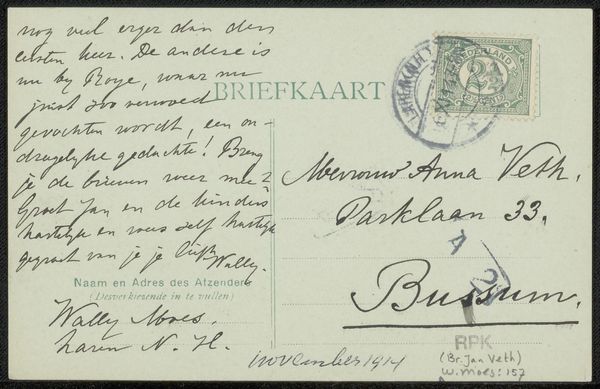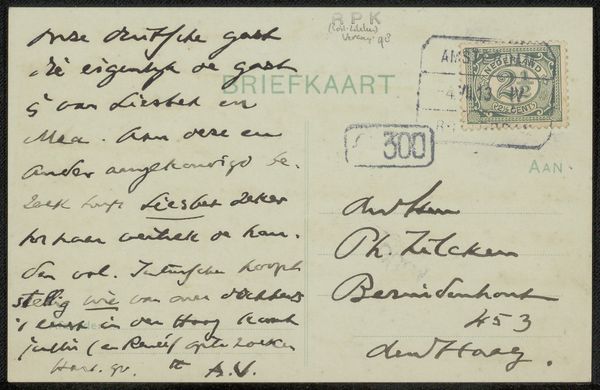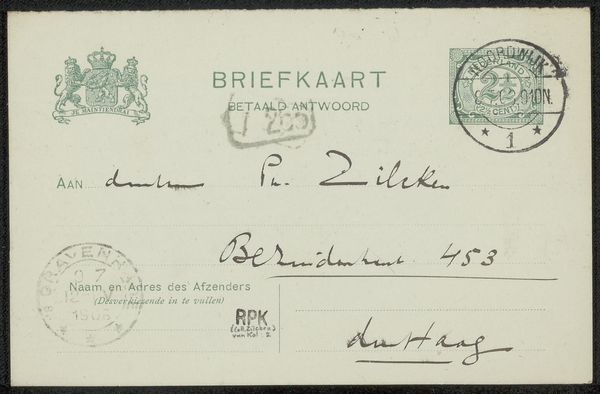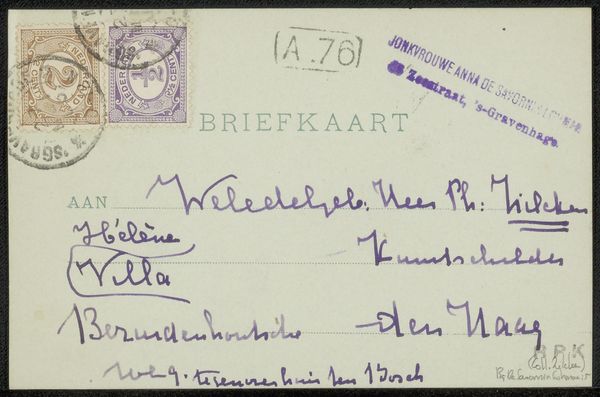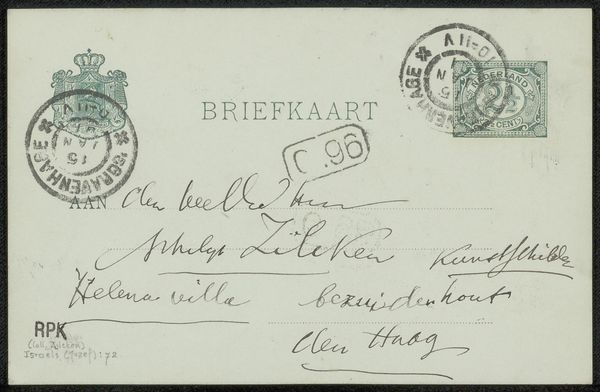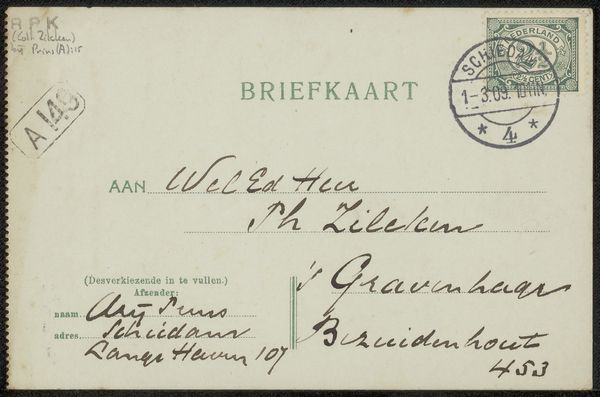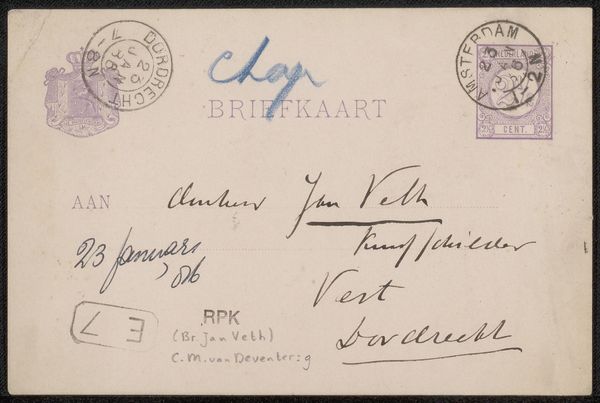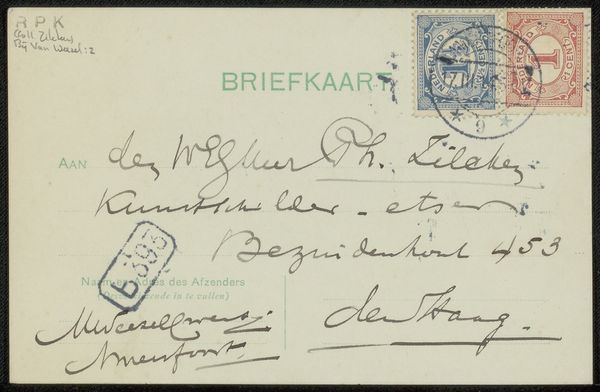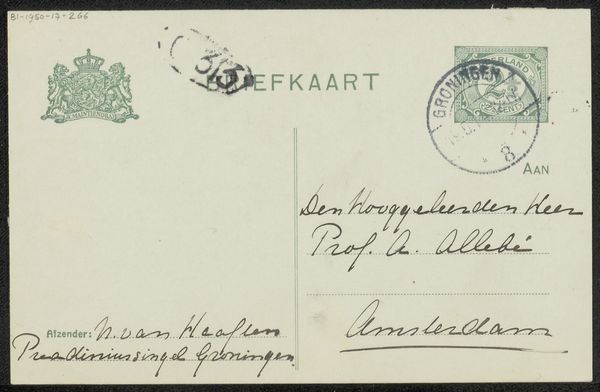
drawing, mixed-media, print, paper, photography, ink
#
portrait
#
drawing
#
mixed-media
#
script typography
#
hand-lettering
# print
#
playful lettering
#
hand drawn type
#
hand lettering
#
paper
#
photography
#
personal sketchbook
#
ink
#
hand-drawn typeface
#
fading type
#
handwritten font
#
calligraphy
#
small lettering
Copyright: Rijks Museum: Open Domain
Curator: This unassuming "Briefkaart aan Philip Zilcken," made before 1892 by Albert Verwey, is more than just a note. It’s a testament to the materiality of communication. Look at the inks, the paper itself – these are the very means of connection. Editor: It seems so simple, just some ink on paper...what captures your attention here? Curator: I'm interested in the social context, how people like Verwey employed readily available, affordable materials for artistic expression and correspondence. The printed base suggests a system of mass production and distribution, democratizing art-making itself. Editor: So, it challenges our notions of high art because it's functional and seemingly ordinary? Curator: Precisely. Think about the labor involved: the production of the postcard, the writing, the postal system. These layers reveal the work embedded in a seemingly effortless act of communication. The imperfections of the handwritten text also speak to the unique human effort, don't you think? Editor: Yes, the fading ink even gives it a certain fragile beauty. Curator: It hints at the transient nature of materiality, doesn't it? It prompts us to reconsider the value we place on objects deemed traditionally 'artistic'. Consider how ephemeral communications transformed with photography, or were lost through time... Editor: It’s almost like the medium itself is part of the message, not just the words. I’ve definitely thought more about where “art” begins, how we often forget art is tied to so many levels of production!
Comments
No comments
Be the first to comment and join the conversation on the ultimate creative platform.
